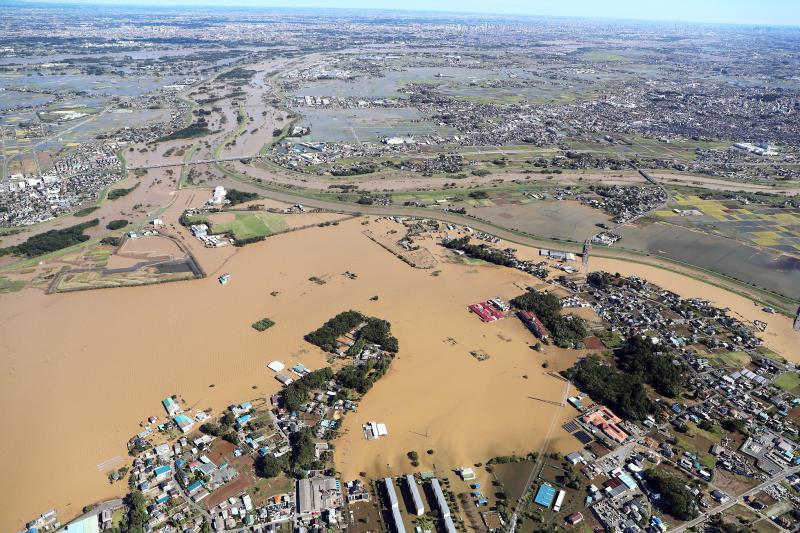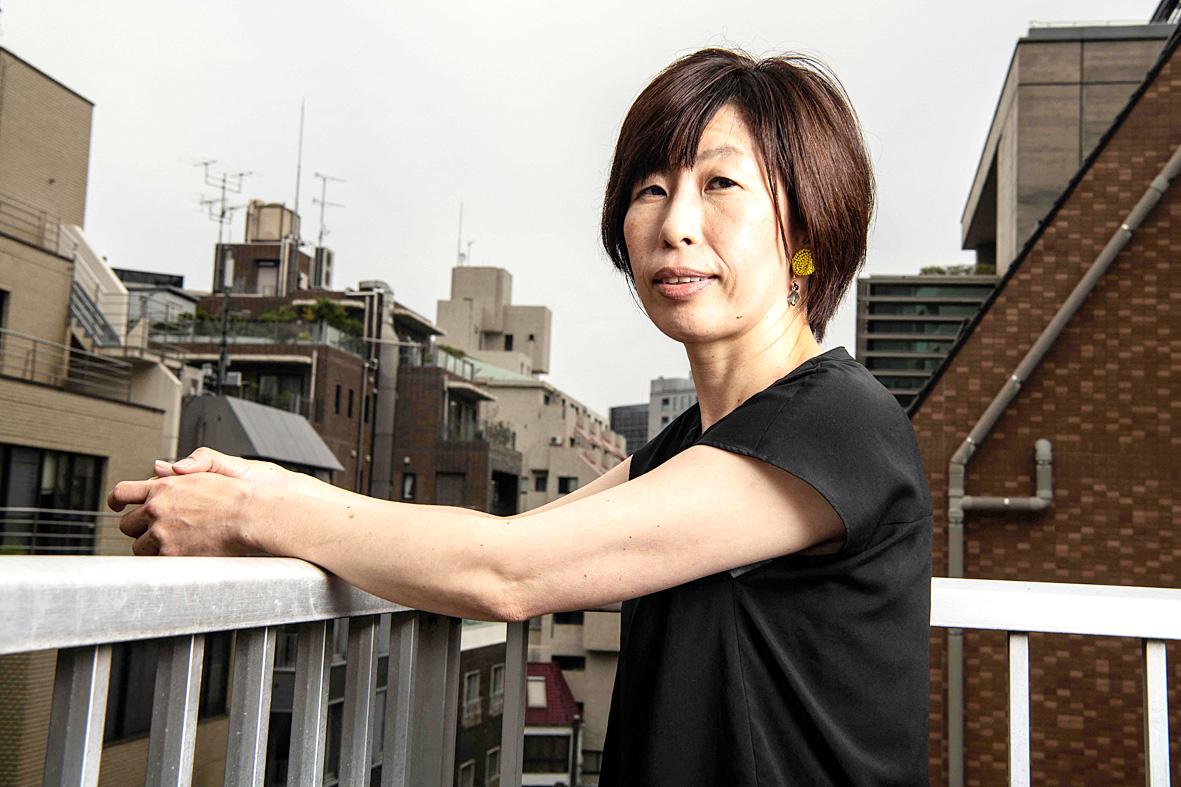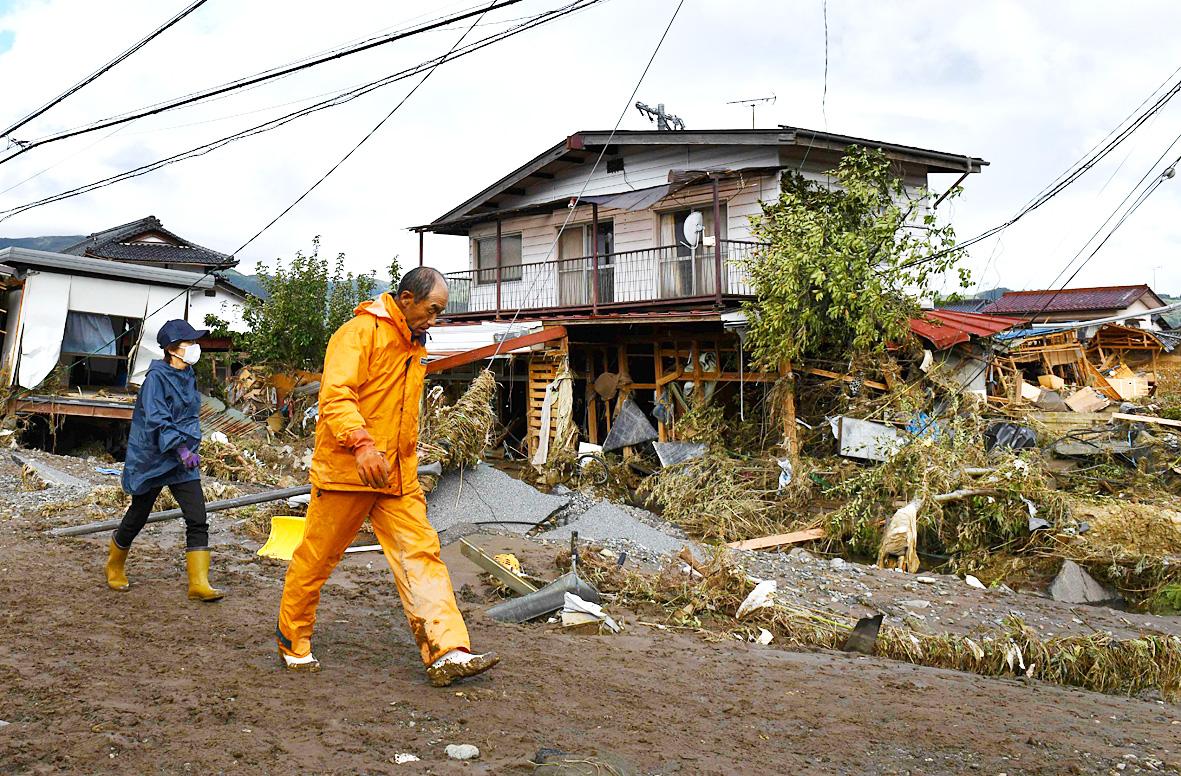Kimiko Hirata has spent nearly half her life fighting to wean Japan off its dependence on coal, and now isn’t the time to slow down, the award-winning activist warns.
“I’m hopeful, but we have no time to waste,” said Hirata, the international director of Japan’s Kiko Network NGO.
“Our future will be gone if we don’t act now,” she said. It’s a message that Hirata, 50, has long worked to drive home in the world’s third-largest economy, which upped its reliance on coal after the 2011 Fukushima disaster took its nuclear plants offline.

Photo: AFP
On Tuesday, the soft-spoken activist was awarded the Goldman Environmental Prize for her work, particularly on blocking new coal-fired power plants in Japan.
The country’s 140 coal plants generate nearly a third of its electricity, second only to liquid natural gas-fired plants.
A signatory to the Paris climate deal, Japan was the sixth-biggest contributor to global greenhouse emissions in 2017, and last year the government set a new 2050 goal for carbon neutrality.

Photo: AFP
That significantly firmed up Tokyo’s climate commitments and was a “major step forward,” Hirata said.
It comes after years of efforts by the Kiko Network — kiko is Japanese for climate. The Goldman prize awarders said the Kiko Network’s “sophisticated, multi-pronged, national anti-coal campaign,” launched in 2011, helped block a third of 50 new coal projects.
The work Hirata spearheaded prevented “the emission of 42 million tons of CO2 per year,” they added.

Photo: AFP
‘HIT BY LIGHTNING’
Hirata is modest about her achievements, citing efforts at a local level, and warning more is needed.
“I think (our work) helped put the brakes on to a certain extent,” she said at her office in Tokyo. “But there are more coal plants than before, so in the broader sense we still face challenges and haven’t won a victory yet.”
Despite having devoted her adult life to tackling climate change, Hirata had no particular interest in environmental issues as a child.
Born in southern Kumamoto prefecture, she was 20 and studying education when she attended an environmental lecture that she said made her feel “like I was hit by lightning.”
“I was in huge shock when I realized that humans were harming the earth,” she said. “We were living this carefree life, without any sense of guilt.”
But despite a growing environmental interest, deepened by reading former US vice president Al Gore’s book Earth in the Balance,” she initially went to work for a publisher.
Unsure how to translate her environmental interests into a career, she decided to intern with a climate NGO in the US.
It was a leap of faith, and all the more so given that internet access was limited at the time, so she picked her target organization by flipping through a directory of US NGOs at a local library.
‘I HAVE HOPE’
After a year in the US, she returned to Tokyo around the time of the 1997 Kyoto Protocol, which set binding emissions-curbing targets for rich nations.
But while Japan hosted the conference that led to the accord, she found her society “staunchly resistant to change” on environmental issues.
Since the Kiko Network’s 1998 founding, she has battled what she sees as a tendency in Japanese society to shun anything seen as disturbing the status quo.
“People might complain about politics at home, but they take no action,” she said.
“We’re brought up not to express different opinions.”
But Japan can’t afford that thinking, she warns, particularly given its exposure to the effects of climate change, including stronger typhoons and heavy rain that has caused deadly flooding.
“We have to change our way of thinking otherwise young people will become the victims” of climate change, she says.
There are hopeful signs, she believes, including new commitments from local firms in the wake of Japan’s new carbon neutral goal.
Engineering giant Toshiba has announced it will stop building new coal-fired power plants and shift to renewable energy, and automakers including Honda and Toyota have announced new targets for electric or fuel cell cars, and carbon-neutral production lines.
“If we take action now, we can still make it so I have hope,” she said. “It’s a matter of whether we can produce outcomes, and that, I think, is a challenge.”

May 26 to June 1 When the Qing Dynasty first took control over many parts of Taiwan in 1684, it roughly continued the Kingdom of Tungning’s administrative borders (see below), setting up one prefecture and three counties. The actual area of control covered today’s Chiayi, Tainan and Kaohsiung. The administrative center was in Taiwan Prefecture, in today’s Tainan. But as Han settlement expanded and due to rebellions and other international incidents, the administrative units became more complex. By the time Taiwan became a province of the Qing in 1887, there were three prefectures, eleven counties, three subprefectures and one directly-administered prefecture, with

It’s an enormous dome of colorful glass, something between the Sistine Chapel and a Marc Chagall fresco. And yet, it’s just a subway station. Formosa Boulevard is the heart of Kaohsiung’s mass transit system. In metro terms, it’s modest: the only transfer station in a network with just two lines. But it’s a landmark nonetheless: a civic space that serves as much more than a point of transit. On a hot Sunday, the corridors and vast halls are filled with a market selling everything from second-hand clothes to toys and house decorations. It’s just one of the many events the station hosts,

Two moves show Taichung Mayor Lu Shiow-yen (盧秀燕) is gunning for Chinese Nationalist Party (KMT) party chair and the 2028 presidential election. Technically, these are not yet “officially” official, but by the rules of Taiwan politics, she is now on the dance floor. Earlier this month Lu confirmed in an interview in Japan’s Nikkei that she was considering running for KMT chair. This is not new news, but according to reports from her camp she previously was still considering the case for and against running. By choosing a respected, international news outlet, she declared it to the world. While the outside world

Through art and storytelling, La Benida Hui empowers children to become environmental heroes, using everything from SpongeBob to microorganisms to reimagine their relationship with nature. “I tell the students that they have superpowers. It needs to be emphasized that their choices can make a difference,” says Hui, an environmental artist and education specialist. For her second year as Badou Elementary’s artist in residence, Hui leads creative lessons on environmental protection, where students reflect on their relationship with nature and transform beach waste into artworks. Standing in lush green hills overlooking the ocean with land extending into the intertidal zone, the school in Keelung